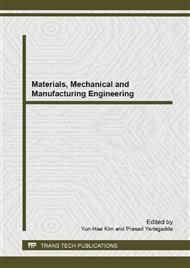p.466
p.470
p.477
p.482
p.486
p.489
p.494
p.500
p.505
Studies on Mechanical Properties of Mulberry Branches Scrimber
Abstract:
This paper presents the manufacturing process of scrimber by using mulberry branches and urea-formaldehyde. The effect of density, hot-pressing conditions and resin content on scrimbers mechanical properties was conducted. The results showed that the mechanical properties of the scrimber met the relative requirements in the density of 0.8 g/cm3 while the resin content was 12% and the hot-pressing conditions were in 1.5MPa, 100°C and 1.4min/mm. The MOR, MOE and IB of samples had reached 40.14MPa, 5024.20MPa and 0.44MPa under the best process condition. The MOR and MOE had achieved the standard of LY/T 1655-2006 and the surface of scrimber had natural textures which could be used as decorated materials for building.
Info:
Periodical:
Pages:
486-488
Citation:
Online since:
November 2013
Authors:
Keywords:
Price:
Сopyright:
© 2014 Trans Tech Publications Ltd. All Rights Reserved
Share:
Citation:


